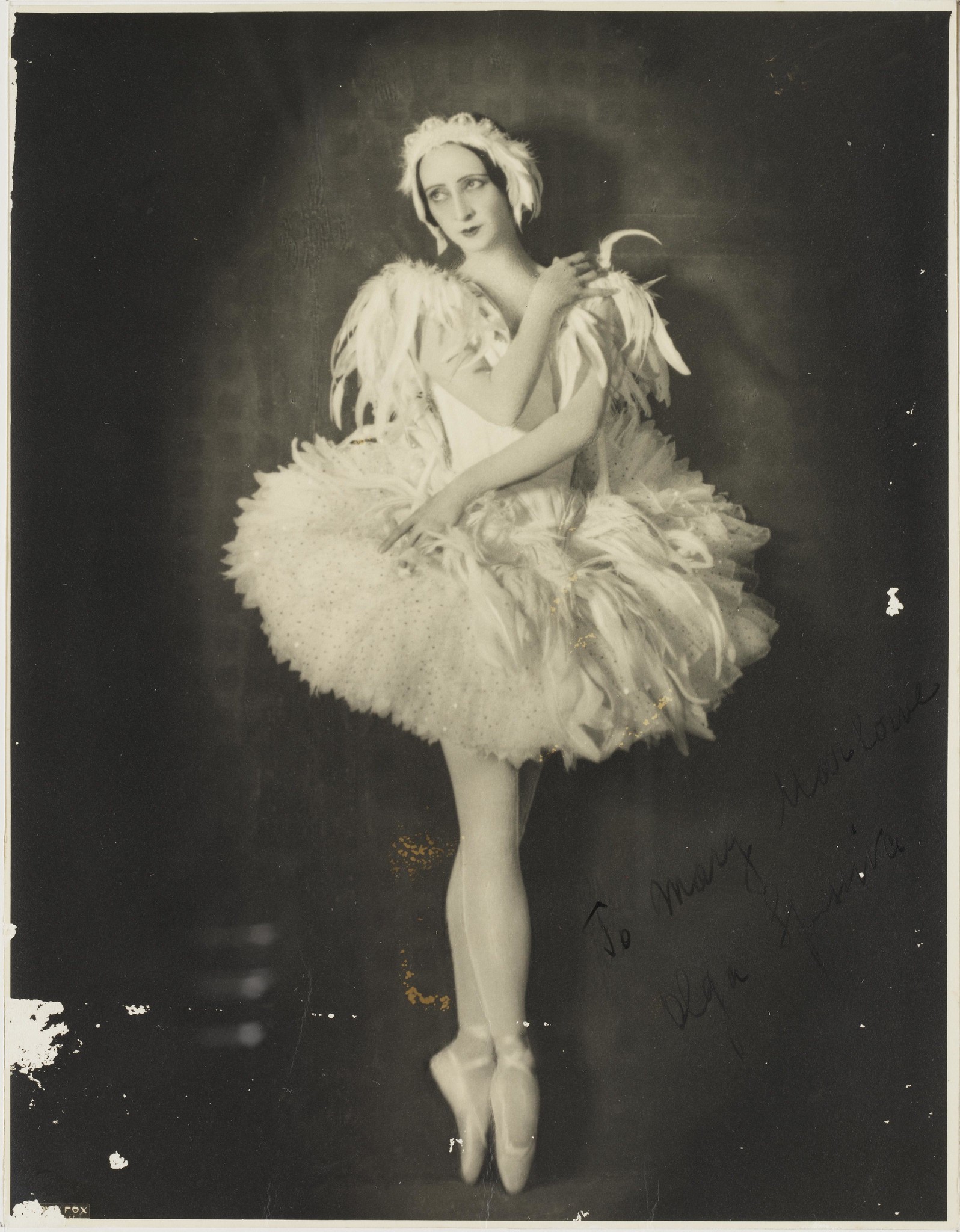people » Olga Spessivtseva / Spessiva
Olga Spessivtseva (1895–1991). Russian dancer
Olga Spessivtseva was born in Rostov-on-Don in Russia in 1895. Following the death of her father she was placed into an orphanage in St Petersburg, but from there, in 1906, commenced her studies at the Imperial Ballet School. She graduated into the Russian Imperial Ballet at the Maryinsky Theatre in 1913, and by 1916 was performing ballerina roles.
Although her exact contemporary, Anna Pavlova, became an international legend, Spessivtseva’s destiny was entirely different. A brilliant dancer, both technically and artistically, she lived through very unsettled times. Looking back at dates and events, this seems fairly clear, but for those who lived during the turbulence of a World War and the Russian revolution, life was confused and confusing. Russian dancers followed their fortunes wherever they could. Some stayed in Russia, some tried their fortunes in Europe and beyond, and others tried to do both. For a while, Spessivtseva danced the great ballerina repertoire in St Petersburg, interspersed with guest appearances with Serge Diaghilev’s Ballets Russes (where her surname was simplified to Spessiva). With Diaghilev, Spessivtseva was introduced to the ballets of Mikhail Fokine, Bronislava Nijinska and George Balanchine. She danced in London in Diaghilev’s new production of The Sleeping Princess in 1921, but then returned to Russia to perform and also to study with the great teacher Agrippina Vaganova. In 1924, Spessivtseva left Russia to become an étoile at the Paris Opéra, where she remained until 1932, whilst continuing to make guest appearances with other companies.
Following Diaghilev’s death in 1929, and the disbandment of his Ballets Russes, there was a great rush to both form and dance in new companies – something absolutely imperative, as a career as a dancer is short. Spessivtseva’s itinerant life as both superstar and guest artist continued unabated throughout the 1930s, including appearances in London in 1932 in Giselle with the Camargo Society alongside Anton Dolin. However, it was on a tour to Australia in 1934 that what became recurrent symptoms of stress first took its toll. She returned to dancing, but following another such incident Spessivtseva finally bade farewell to the stage in Buenos Aires in 1939. She went to America, where she remained for the rest of her life, but was admitted into a psychiatric hospital in New York for a period of 20 years. When Spessivtseva recovered and returned to the world, her career had long finished and she was mostly forgotten. Although she had wished to return to Russia, she in fact stayed in the shelter of the Tolstoy Foundation, in Valley Cottage, New York, until her death in 1991 at the age of 96.
By all accounts Spessivtseva was a dancer of rare talent with an ability to draw an audience into another world – one of her own making that enshrined the characters of the roles she was playing. Her story is a sad one, but for those lucky enough to see her perform, it seems to have been a remarkable and unforgettable experience. The BBC made a short film about her in 1964, and Dolin, who had visited her in America during her rehabilitation, wrote her biography – The Sleeping Ballerina: The Story of Olga Spessivtseva – in 1966.

